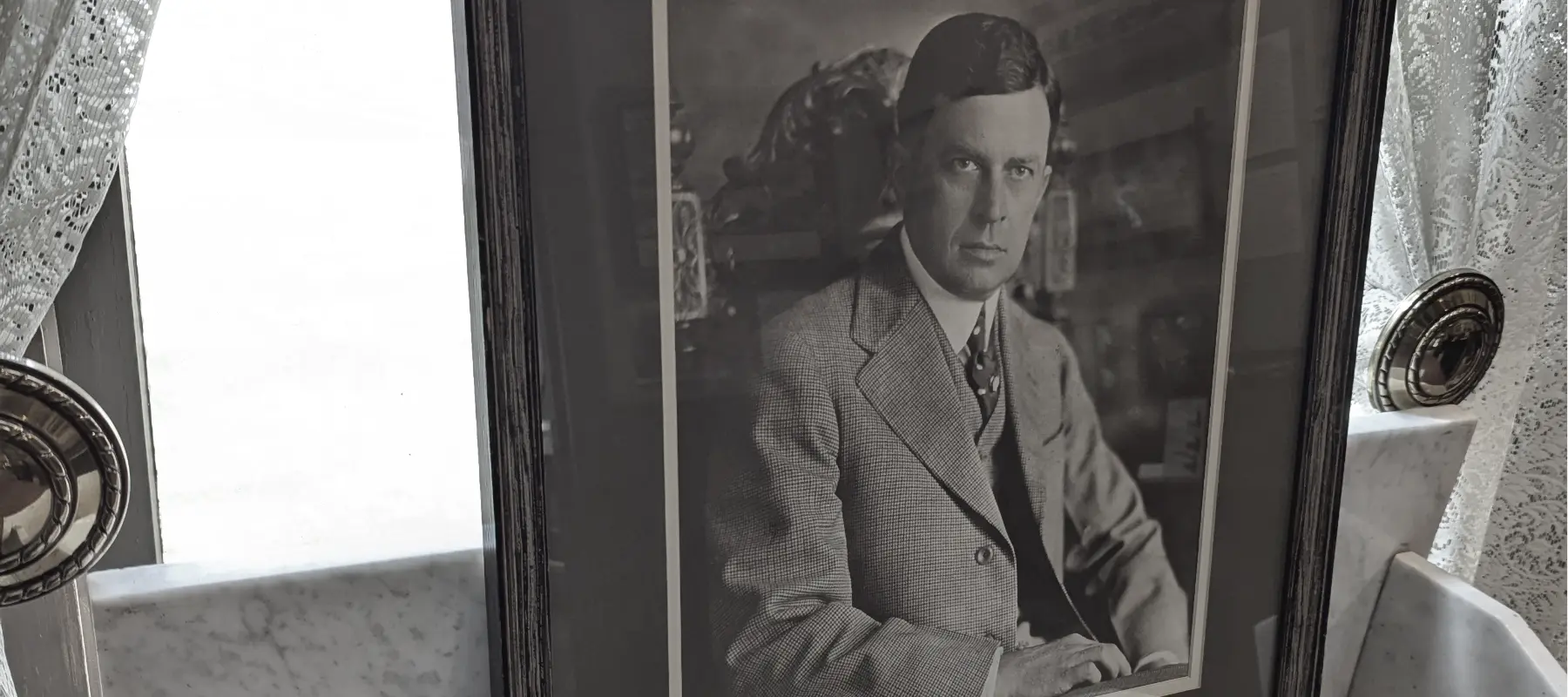Megan Pellegrino is the Director of both the Hoover Historical Center and the Museum Studies program at Walsh University. The museum, housed in three historical buildings from the 19th and 20th centuries, faced significant challenges in preserving its collections, especially since no environmental monitoring system was in place. Without proper historic building preservation monitoring in place and real data on the environmental conditions, the collections were vulnerable to temperature fluctuations, humidity, and other risks.

Megan Pellegrino, Director of the Hoover Historical Center and the Museum Studies program at Walsh University.
Data-driven grant applications for historic preservation
Megan’s initial attempts to secure funding to improve collections care were unsuccessful. “I applied for a massive IMLS [Institute of Museum and Library Services] grant, and we didn’t get it,” Megan explained, citing the absence of environmental data as a key reason. Seeking advice from conservators across the country, she realized that a phased approach to collection care would be more achievable. She began looking for a monitoring solution to gather data on the museum’s environmental conditions, hoping this would support future grant applications.
Megan secured a National Endowment for Humanities PAG (Preservation Assistance Grants for Smaller Institutions) grant and decided to install Conserv sensors across the museum’s buildings. With Conserv, Megan’s team deployed 22 sensors throughout the exhibition and storage spaces. “I have monitors in every single space that has or could have collection items or objects,” she noted. The system provided real-time monitoring and automatic alerts for dangerous conditions, a vital feature for a small museum with limited staff.
Real-time environmental alerts saving historical collections
Conserv’s impact was immediate.
“I really think the system saved the museum from a major problem,” Megan recalled. One Friday night that winter, Megan received alerts that the temperature in the museum’s main building was dropping quickly. After investigating, she discovered that the pilot light had gone out on the heater. “Within three hours of me leaving, the temperatures had dropped to 50 degrees.”
Without Conserv, Megan wouldn’t have realized anything was wrong until returning after the weekend. Instead, she was able to prevent further damage to the collections housed in an 1853 Victorian farmhouse with limited insulation.
Beyond preventing crises, Conserv has provided Megan with the data she needs to apply for larger grants. “The next grant is the CAP grant, which will be a conservation assessment program,” Megan explained. Unlike previous applications, she now has an entire year’s worth of data on environmental conditions, which will strengthen her case for future funding. “Instead of doing two days’ worth of monitoring, they’ll have a whole year’s worth of data to look at.”
Cost-effective monitoring solutions for small museums
With the current grant ending soon, Megan was concerned about losing access to the monitoring system. However, Conserv’s proven value led her to successfully argue for retaining seven monitors across the museum buildings. “What would it have cost if we had had a major problem?” she asked, emphasizing the importance of preventive measures. Even on a tight budget, the museum’s leadership agreed that maintaining historic building preservation monitoring remained a priority and that it was important to continue with the reduced but critical monitoring system.
Megan also praised Conserv for its ease of use. “Installation was really easy,” she said, noting that the support team helped her set up alerts and ranges for the sensors. She found the remote monitoring capability and customizable alerts especially valuable. Megan is now equipped to respond quickly to environmental changes and protect the museum’s irreplaceable collections.
Remote monitoring impact on historic building management
Conserv has transformed the way the Hoover Historical Center approaches collections care. From providing real-time alerts that prevent disasters to supporting grant applications with comprehensive data, Conserv ensures that Walsh University’s historical collections are well-protected. “I think that the Conserv system sells itself with its ease of use and being designed by experts in the field with museums in mind,” Megan concluded. With Conserv in place, Megan is confident in the long-term preservation of the museum’s artifacts and ready to continue advancing the Hoover Historical Center’s mission of historical preservation.
If you have any questions about environmental monitoring, integrated pest management, or just want to talk about preventative conservation, please reach out to us! Don’t forget to check out our blog or join our community of collections care professionals where you can discuss hot topics, connect with your peers or even take a course to get familiar with the Conserv platform.




